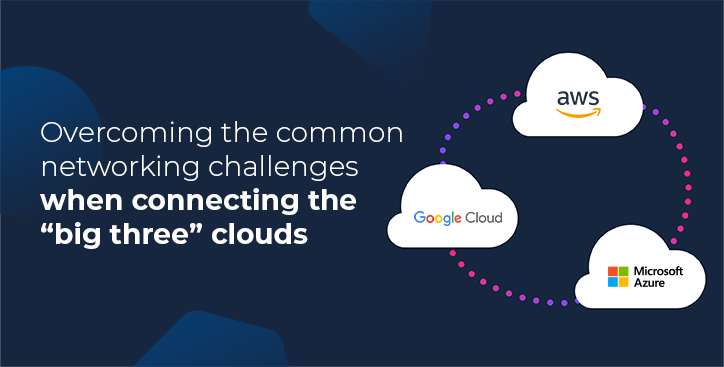New Trends In Network-As-A-Service
By The Console Connect Team|11 October, 2021

Enterprise adoption of what has become known as Network-as-a-Service (NaaS) is being spurred by several factors, not least of which is the ‘technical hangover’ exposed by the global pandemic.
Find out how the consumerisation of IT, the shift from capex to opex consumption of enterprise services, and the need to respond to changing market dynamics quickly, are all creating the perfect storm for NaaS adoption...
As-a-service adoption shows no signs of slowing
According to research firm IDC, the shift to cloud-centric infrastructure is accelerating. By the end of 2021, based on lessons learned, 80% of enterprises will put a mechanism in place to shift to cloud-centric infrastructure and applications twice as fast as before the pandemic to make the organisation more digitally resilient.
As a result, more than 75% of infrastructure in edge locations and up to 50% of data centre infrastructure will be consumed as-a-Service by 2024, according to IDC.
Other analysts have arrived at the same conclusion - organisations need to be able to respond faster. According to Forrester: "The events of 2020 meant IT plans and priorities had to change. Nearly two-thirds (64%) of IT leaders began accelerating the shift of IT spend from capex to opex and to consider flexible consumption models like as-a-Service for the future."
Forrester identifies that this shift allows firms to invest in the services they need today, instead of waiting for future funds and stalling advancement. In the next 12 to 18 months, 41% of IT leaders expect to consume their infrastructure IT services via an as-a-Service model.
Just as with cloud servers, one of the additional benefits of the rent versus buy model for networks, is that it eliminates future technical debt by making the upgrading of the underlying infrastructure someone else’s problem.
According to John Burke, CIO and Principal Research Analyst, at Nemertes Research: “NaaS offers ROI (return on investment), enabling customers to trade CapEx for OpEx and refocus person hours on other priorities.”
The providers of NaaS platforms - such as Console Connect by PCCW Global - look after equipment refresh and upcycle opportunities to ensure that the network is operating at peak performance levels and also allows access to new technology like 100G.
But the way enterprises consume these services matters too. Most want more autonomy. All of the major providers of SaaS, PaaS, and IaaS, have their own ways of interfacing, which can cause headaches for network engineers. By bridging the communication gap through APIs, NaaS platforms like Console Connect can help enterprises move faster and with less heavy lifting on their end.
In a digitally transformed environment it’s thought that over 50% of B2B collaboration occurs via APIs. NaaS essentially unlocks new ways to generate value from traditional Layer 2 and 3 network capability by moving it up to Layer 7, giving businesses the agility to orchestrate connections in an instant, versus a 30 to 60 day cycle historically.
This requirement is prompting a revision of supplier relationships. According to IDC, by 2024, 80% of enterprises will overhaul relationships with suppliers, providers, and partners to better execute digital strategies. Reevaluating technology, and service provider relationships will be crucial to long-term success in an environment where the existing IT ecosystem is undergoing major transition.
"Enterprise NaaS is an exciting new model for enterprises to consume network infrastructure via flexible options," said Brandon Butler, senior research analyst, Enterprise Networks at IDC.
"Enterprise NaaS models enable myriad significant benefits, from giving enterprises faster access to new technology and features to enabling enterprises to free up their IT staff to focus on business-enabling tasks."
The move to an on-demand networking model
According to Mordor Intelligence, the global NaaS market was valued at $8.04 billion in 2020, and is expected to reach $45.03 billion by 2026, registering a CAGR of 33.05%.
Enterprises are planning to invest more in key capabilities for newly created demand, from cloud and AI-based networking to analytics and assurance, as well as the challenge of supporting much more distributed teams.
In this case, enterprises are expected to adopt capabilities such as remote network management via the cloud, AI-based automation, and improved troubleshooting for networks that are facing greater demands than before.
Essentially, enterprises using NaaS can more simply consume and scale products and services as they need based on what their business requires or the rapidly changing global economy.
According to Mordor Intelligence, the WAN as-a-Service segment enabled by NaaS is anticipated to hold a significant market size with enterprise networks increasingly under pressure with more and more users, applications, and devices than ever before, primarily relying on the network for seamless connectivity to a wide range of endpoints.
Ultimately, NaaS offers companies greater flexibility and performance gains in their network infrastructure. With on-demand purchasing and scaling, companies can pay only for the networking services they need, achieving greater flexibility in provisioning without having to rearchitect networks or rework unwieldy contracts from the ground up.

.jpg)





.jpg)

